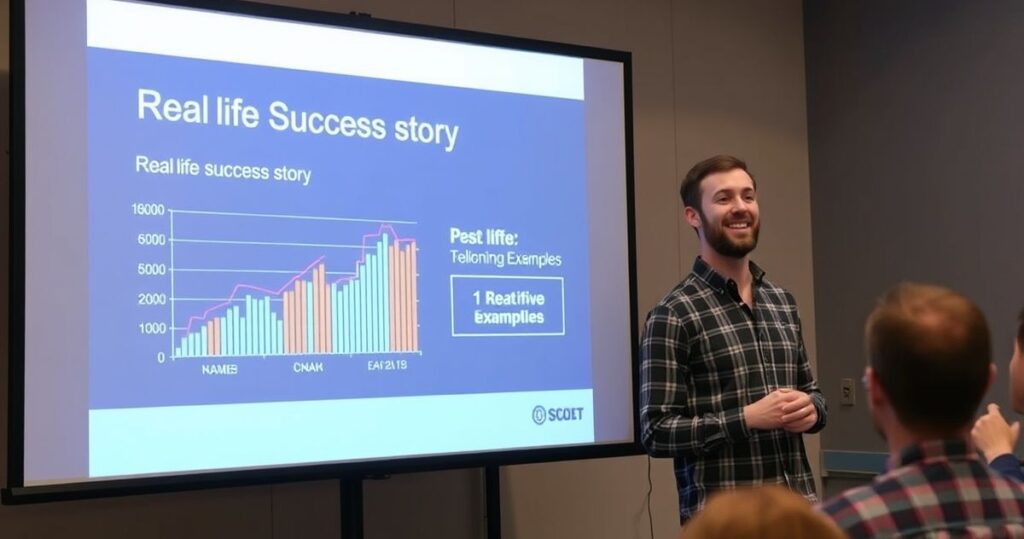How to Use Real-Life Examples to Make Webinars More Engaging

Webinars are a powerful tool for education, lead generation, and sales. But let’s be honest—not all webinars are created equal. Some are engaging, insightful, and downright inspiring. Others? Well, they’re the digital equivalent of watching paint dry. So, what’s the difference? One of the most underrated yet effective strategies is the use of real-life examples. When done right, they can turn a generic presentation into a relatable, memorable experience that resonates with your audience. But how do you use real-life examples effectively? That’s exactly what we’ll explore in this guide.
Why Real-Life Examples Work in Webinars
Before diving into the “how,” let’s talk about the “why.” Real-life examples are powerful because they bridge the gap between theory and practice. Think about it: Would you rather listen to a vague explanation of a concept or hear a story about how that concept solved a real problem? Exactly.
Real-life examples:
- Build trust by showing, not just telling.
- Humanize your content, making it more relatable.
- Simplify complex ideas by grounding them in practical scenarios.
- Boost engagement by tapping into emotions and curiosity.
Now, here’s where it gets interesting: A well-placed example doesn’t just explain—it persuades. When your audience can see themselves in the story, they’re more likely to take action.
How to Find Compelling Real-Life Examples
Not all examples are created equal. The key is to choose stories that align with your audience’s pain points, goals, and interests. Here’s how to find the perfect fit:
-
Draw from Your Own Experiences
Your personal or professional journey is a goldmine of material. For instance, if you’re hosting a webinar on productivity, share a story about how you overcame a major time-management challenge. -
Use Client Success Stories
Nothing validates your message like a testimonial. Highlight a client’s journey, focusing on the problem they faced and the results they achieved. Bonus points if you can include specific metrics (e.g., “This strategy helped them increase their ROI by 150%”). -
Explore Industry Case Studies
Case studies are like real-life examples on steroids. They provide a detailed look at how a strategy or solution worked in a real-world context. -
Leverage Pop Culture or Current Events
When appropriate, weaving in a pop culture reference or recent news story can make your webinar feel timely and relevant.
Structuring Real-Life Examples in Your Webinar
Once you’ve chosen your examples, it’s time to integrate them into your webinar. Here’s a simple yet effective framework:
-
Set the Scene
Start by describing the situation or problem. For example, “Let me tell you about Sarah, a small business owner who was struggling to generate leads.” -
Highlight the Challenge
Dig deeper into the pain points. What was at stake? Why was this problem so frustrating or urgent? -
Introduce the Solution
Explain the strategy, tool, or approach that was used to address the challenge. -
Showcase the Results
End with the outcome, emphasizing the transformation. “After implementing this strategy, Sarah doubled her leads in just 30 days.”
Pro Tip: Use visuals to enhance your storytelling. A before-and-after chart or a testimonial video can make your example even more compelling.
Tools to Elevate Your Webinar Examples
Here’s where technology comes into play. Our AI-powered webinar creation tools can help you craft and present real-life examples seamlessly:
-
Slide Outline Creator
Use this tool to structure your examples in a way that balances education and engagement. For instance, it might suggest breaking a complex case study into digestible sections. -
Webinar Offer Builder
When your example leads to a product or service, this tool ensures your offer is irresistible. It helps you stack value, position your product, and create urgency. -
High-Value Bonus Brainstormer
Need to sweeten the deal? This tool generates bonus ideas that complement your examples and multiply conversion rates. -
Risk-Reversal/Guarantee Generator
Make saying “yes” a no-brainer by pairing your examples with guarantees that remove objections.
A Real-World Example in Action
Let’s say you’re hosting a webinar on email marketing. Instead of just explaining the theory, you share the story of a client (let’s call her Emily) who struggled with low open rates. You describe how she implemented a specific strategy (e.g., personalized subject lines) and saw her open rates skyrocket from 12% to 35%.
But you don’t stop there. You use the Webinar Offer Builder to present your email marketing course as the next logical step. Then, you sweeten the offer with a bonus checklist created by the High-Value Bonus Brainstormer and back it all up with a money-back guarantee generated by the Risk-Reversal/Guarantee Generator.
Result? Your audience doesn’t just hear a story—they see the tangible benefits and are motivated to act.
Common Pitfalls to Avoid
While real-life examples can be a game-changer, there are a few traps to watch out for:
-
Overloading with Details
Keep your examples concise and focused. Too much information can overwhelm your audience. -
Using Irrelevant Stories
Make sure your examples align with your audience’s needs and interests. A story that’s not relatable will fall flat. -
Neglecting the Takeaway
Always tie your example back to your main message. What’s the key lesson or action item?
Final Thoughts
Using real-life examples in your webinars isn’t just a nice-to-have—it’s a must if you want to engage your audience and drive conversions. The key is to choose stories that resonate, structure them effectively, and leverage tools to enhance your presentation.
So, the next time you’re planning a webinar, ask yourself: What’s the story you can tell that will make your audience sit up and take notice? Because when you connect with them on a human level, you’re not just delivering a presentation—you’re creating an experience.
Ready to take your webinars to the next level? Explore our AI-powered webinar creation tools and start crafting presentations that truly resonate.



